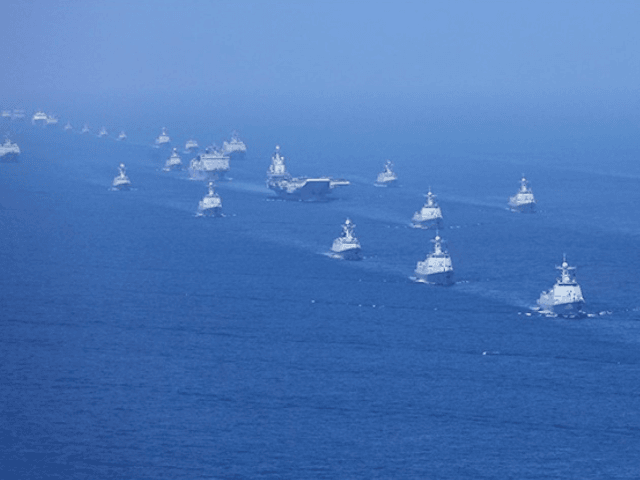The Chinese People’s Liberation Army Navy (PLAN) conducted a competitive mine warfare exercise in the East China Sea last week. The exercise was intended to help the Chinese military both become more adept at clearing minefields and more skilled at creating them.
China’s Global Times reports that “nearly 20 underwater mines were installed, detected, and swept during the assessment.” The mine-laying teams were reportedly instructed to do the best possible job of creating hazards, while the minesweepers were sent in with very little advance information and instructed to perform as they would under actual combat conditions.
The Global Times report suggests the exercise was intended to hone the PLAN’s skills for possible future action in contested South China Sea waters, or against Taiwan:
Bombers, minesweepers and mine-hunting ships of multiple PLA theater commands participated in “back-to-back” tests in the East China Sea, which included covert installation of underwater mines by air units, navigational path clearance by surface ships, and mine detection and sweeping, the official website of the PLA Navy, navy.81.cn reported Friday.
Installation and clearance of underwater mines is an important naval battle capability that must be improved upon in preparation for possible future foreign interference in the Taiwan Straits, the South China Sea or the East China Sea, Song Zhongping, a Chinese military expert and TV commentator, told the Global Times on Monday.
Some military powers could block China’s key marine outfalls and navigation paths by installing mines to delay the PLA, Song added, noting that PLA Navy preventative strategy could help defuse such foreign threats.
PLA deterrence strategy of laying underwater mines could also effectively keep foreign forces away from China’s coastal waters, he said. [emphasis added]
The Chinese Navy has previously mounted exercises specifically intended to simulate clearing “smart mines” deployed in a defensive perimeter by Taiwan.
Reporting on one such exercise in 2014, the Taipei Times noted that Taiwan’s mines are a “significant part of the nation’s anti-invasion defenses,” deployed in a manner that would only bring them into play if the Chinese military was attempting an amphibious invasion of the island. The smart mines are buried in the ocean floor in shallow water near terrain features that make Taiwan vulnerable to enemy landings. In the event of an invasion, the mines would be activated by remote signals and deployed against landing craft.
The PLAN has been claiming for several years that it has developed the capability to detect and detonate smart mines from a safe distance.
The Chinese Navy has conversely developed plans for deploying large numbers of much less discriminating sea mines around contested islands, believing the U.S. Navy has lagged behind in developing anti-mine capabilities.
During an inspection of naval facilities on June 11, Chinese President Xi Jinping stressed the need to upgrade China’s naval forces with more advanced weapons and training, in addition to performing “ideological work within the military” that will make soldiers and sailors more loyal to the Communist Party. This kind of ideological development would also make PLA and PLAN forces more likely to obey quickly and completely if ordered to take extreme actions, such as laying minefields in the world’s most heavily trafficked trade route or invading Taiwan.

COMMENTS
Please let us know if you're having issues with commenting.